computex2016
Latest

Computex highlighted VR's growing pains
This is the year of virtual reality. In 2016, consumer versions of three major VR headsets -- the Oculus Rift, HTC's Vive and the PlayStation VR -- have or are about to hit store shelves, while smartphone-based models like the Gear VR are growing in popularity. But even as VR gains momentum, it's still an enigma for most people. This was never more apparent than in the halls of this year's Computex in Taipei. VR was front and center, but instead of traditional game demos, we saw examples of curious and niche applications that suggest the use case for VR is still evolving.
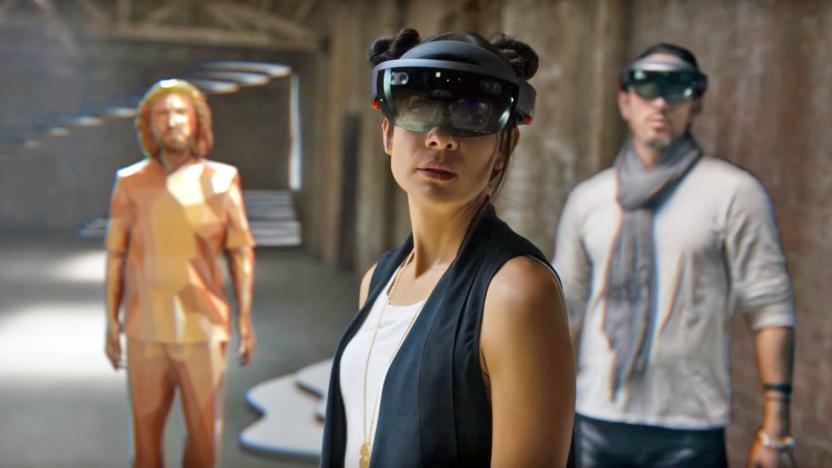
Microsoft has just what VR needs
In a move we should have seen coming from a mile away, Microsoft announced that it will be opening up the Windows Holographic platform, which powers HoloLens, to other companies. Those partners will be able to build AR headsets like HoloLens, full-fledged VR headsets like the HTC Vive, as well as components powering those devices. It's similar to Microsoft's original approach to PCs with Windows -- build the operating system and let others go wild with hardware -- as well as its push for new form-factors with the Surface. With the VR market still feeling like the Wild West, a bit of stability from Microsoft could be a huge help.

Synaptics' under-glass fingerprint reader is almost here
It was just a month ago when LG Innotek unveiled its under-glass fingerprint sensor, but it's clearly not the only company working on this space. At Computex, the folks over at Synaptics were kind enough to let me take a sneak peek at a similar technology that they've been working on for two years. For some reason, photography was forbidden, but the prototype was simply a special glass trackpad -- with extra details which I am not at liberty to disclose -- retrofitted into an existing laptop. It'll essentially be a spiritual successor to Synaptics' SecurePad (pictured above), but rather than having to cut a hole through the trackpad, the next-gen fingerprint sensor will simply sit underneath the glass layer, so that when it's idle, you can still use the entire trackpad area for the usual cursor and gesture controls.

Computex 2016: It's a wrap!
Just like that, Computex 2016 has come to an end. As in previous years, the show kicked off with ASUS' big keynote presentation, but this time it wasn't just laptops, tablets and smartphones -- the company also unveiled its first home robot, Zenbo. We met up with Chairman Jonney Shih who gave us an exclusive demo of this $599 machine, so do check out our interview with him. We also saw Intel launch its first 10-core desktop processor geared towards hardcore gamers, followed by yet another exclusive interview -- this time with the company's new consumer head, Navin Shenoy.

ASUS' Zenbo proves our robot butler dreams remain just that
Another robot wants to join your family. Announced earlier this week, ASUS' Zenbo is aimed at providing "assistance, entertainment and companionship." Like numerous home robots that have (literally) rolled out before Zenbo, it involves voice-activated commands, cameras, an internet connection and a touchscreen. It can't wash your clothes or clear the table and you still need separate robots to vacuum your house, or get you from A to B. ASUS says Zenbo can help with cooking, but that just means it can read out recipes. It's not chopping onions for you -- it doesn't even have arms. Let's take a look at the promo video.
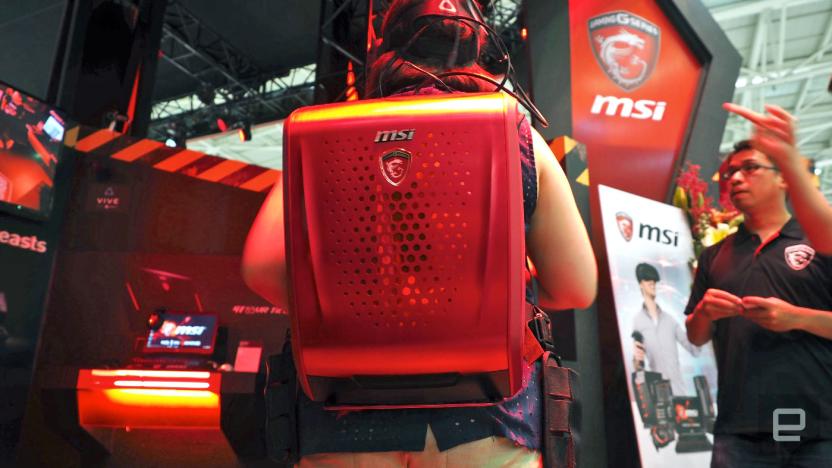
MSI's Backpack PC is an imperfect solution to VR wires
One of the problems with the current crop of non-smartphone VR headsets is that they need to be connected to PCs via thick, heavy cables. These might hamper your movements when you're busy playing a game, or worse, you could trip over an errant wire and fall face flat on the floor. Well, a few companies have come up with an interesting solution: VR backpacks that carry a full-fledged PC, enabling you to move around unencumbered. MSI's version is called the Backpack PC. Since it was on display here at Computex 2016, so I took a few minutes to try it out for myself.
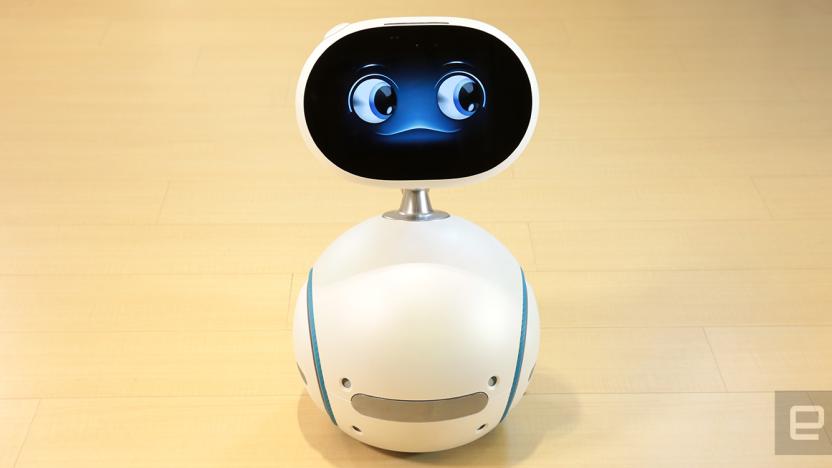
ASUS' $599 home robot is smarter than it looks
It goes without saying that ASUS' first home robot, Zenbo, stole the show at this year's Computex. As soon as it rolled onto the stage during the keynote, everyone rushed to the front to get a good look at this cute little fella -- and that was before Chairman Jonney Shih shocked the audience with its surprisingly attractive low price of $599. Apart from its basic capabilities, little else was said about the machine, so we traveled all the way to ASUS' headquarters to meet Shih for a detailed demo. During the process, we managed to pry a little more info out of the exec, including what's inside this mysterious bot, the thinking behind its design and a target launch date around the holiday season.
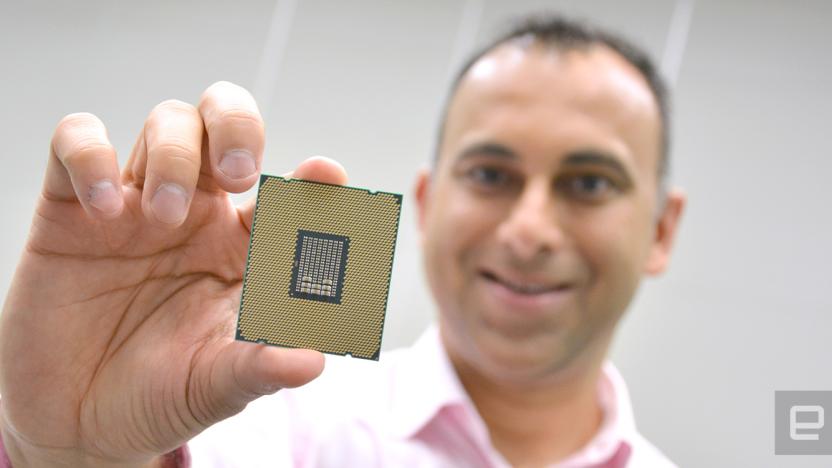
Intel's new consumer head dreams of building J.A.R.V.I.S.
Intel is in the midst of its biggest business transition to date. Just a few months ago, the chip giant announced it would be laying off 11,000 workers and taking a step away from the PC market to focus on wearables and IoT devices. Coinciding with those announcements was an executive shuffle that put Navin Shenoy, its mobile-client VP, in charge of the broader client computing group (which covers all consumer devices). At Computex this week, we had a chance to pick Shenoy's brain about Intel's path forward.
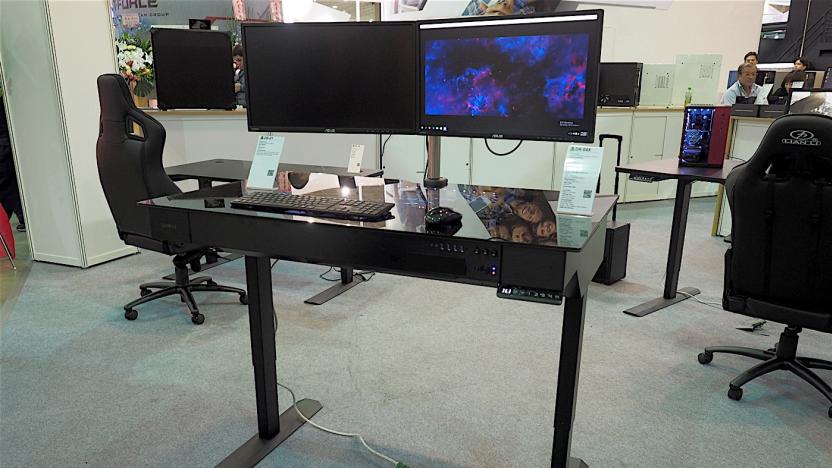
A combination standing desk / PC is the ultimate all-in-one
Standing desks are the latest trend in office furniture and for good reason; sitting for hours a day can be pretty bad for your health. Lian Li, a case manufacturer that has built PCs into desks in the past, has taken that idea and incorporated into the DK-04, a PC chassis / desk combo that can be lowered and raised for both sitting and standing positions.

Computex's most excessive PC mod is a cotton candy machine
Asia's biggest tech show regularly delivers on the PC case mods. If they're not labors of love courtesy of international case-modders, then it's a company producing the case mods itself. MSI possibly went too far commissioning this blood sugar-baiting monstrosity. PC modder Mike Petereyns was responsible for the MSI "Cotton Candy," made to coincide with the company's 30th anniversary, pairing the state fair diabetes trap with the PC producers' own GFX (GTX780Ti), camouflage motherboard and white liquid cooling system. Oh and someone was making cotton candy for everyone. Which always helps draw a crowd. Elsewhere,there was a vibranium-tinged Marvel tribute. Have a look at that in the gallery below.
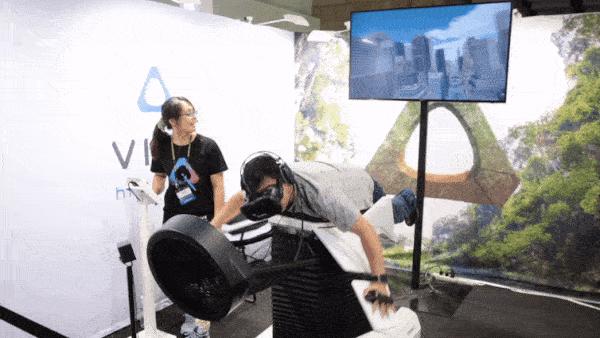
Birdly and HTC Vive let you fly like a bird over Manhattan
Nope, we're not quite done yet with the HTC Vive demos at Computex. In addition to the three VR titles we tried yesterday, there was one more that we managed to hop onto after the show floor cleared. Yes, it was that popular. Birdly is a full-body simulator ride that uses multi-hinged flaps and motion feedback to give you a taste of flying like a bird. Better yet, there's a fan in front of the user to simulate headwind which gives you a better sense of flying speed. The visuals and head-tracking are offered by an HTC Vive, which allowed me to enjoy a nice bird's eye view while gently flapping my way through the skyscrapers in Manhattan. Well, I say gently, but it got intense once I started climbing my way back up -- it's definitely a fun alternative to working out in the gym.
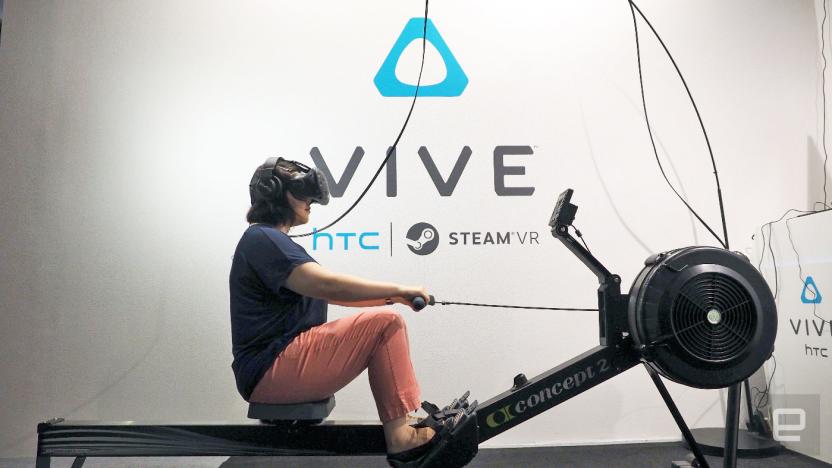
VR rowing turns a workout into a vacation
Playing VR games can be surprisingly good exercise -- ducking your head behind artificial barriers or waving your arms around to shoot enemy robots can work up a sweat. But what if you wanted a genuine workout? Well, VR fitness appears to be a rising trend, with several applications designed to alleviate the tedium of indoor gyms. Here at Computex, I tried out yet another VR fitness apparatus that had me rowing through a tropical oasis while burning calories at the same time.

Microsoft gets into VR by letting others build HoloLens gear
HoloLens will eventually get some siblings -- but most of them won't be coming from Microsoft. At Computex today, Microsoft announced that it's opening up the Windows Holographic platform to third parties, which they can use to build their own virtual and augmented reality devices. Yes, that's right: Windows Holographic won't just be about the AR experiences we've seen in HoloLens; it'll also power full-fledged VR hardware. Microsoft is calling this mixture of AR and VR "mixed reality."

Windows Hello fully opens up to non-Microsoft devices
Soon you'll have even more options to log onto Windows 10 quickly and securely. Microsoft just announced that it's opening up the Windows Hello Companion Device Framework to other companies, which means their devices will let you hop into Windows just as easily as Microsoft's Band. On stage at Computex today, a Microsoft representative used the Nymi band, an authentication wearable for the workplace, to log into her computer. You can also expect to see things like ID cards, phones and potentially other wearables working together with Windows Hello.
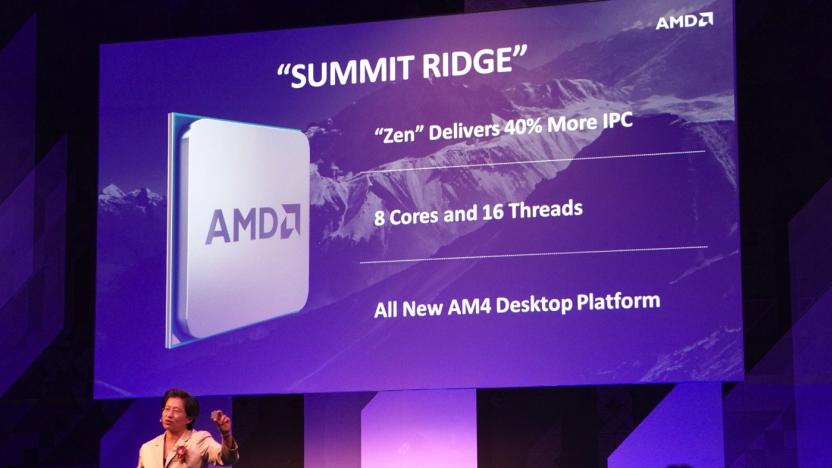
AMD is releasing the Zen 'Summit Ridge' CPU later this year
Just like Intel's Apollo Lake processors, AMD's high-performance Zen (codename Summit Ridge) CPU is coming out in late 2016. Zen has 8 Cores with 16 threads, promises a 40 percent increase in computing power and is geared towards mid-range to high-end rigs. Lisa Su, the chipmaker's CEO, announced at Computex in Taiwan that the desktop chip will be available to manufacturing partners by the third quarter of the year. That means we could see Zen-based products by the end of 2016 or early 2017. AMD has big plans for Zen, though, and is working to scale it across different device types: The company aims to follow the desktop version with one for servers, and eventually one for laptops.
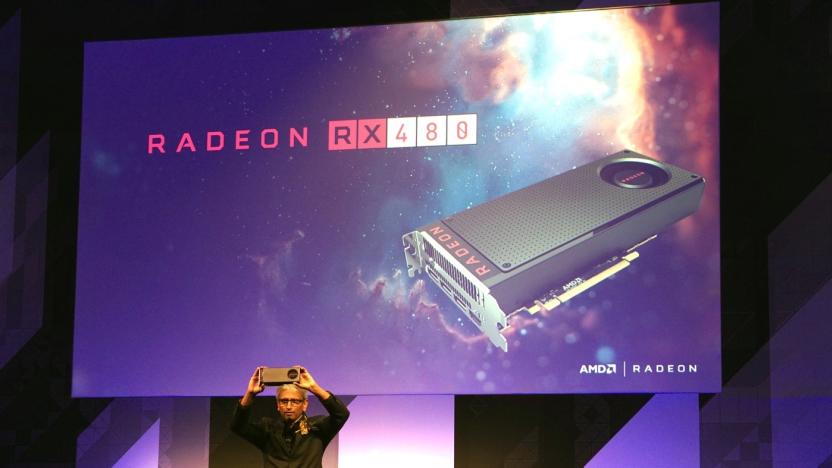
AMD's Radeon RX 480 GPU is VR ready for just $199
For its upcoming Polaris GPUs, AMD doesn't just want to entice hardcore gamers. Instead, it's aiming to bring virtual reality-capable PCs to just about everyone with its new Radeon RX480 video card, which will retail for a mere $199. The RX480 is capable of more than five teraflops of computing power, whereas NVIDIA's new GTX 1070 packs in over six teraflops for $380, and the high-end GTX 1080 sports around nine teraflops for $600. On paper alone, AMD's new card is an astounding value -- and one that NVIDIA can't yet counter without lowering prices.

AMD's 7th generation laptop chips are stronger Intel competitors
AMD has always been the cheaper alternative to Intel's processors, but with its latest generation of mobile chips, it's also aiming to close the performance gap. Announced at Computex today, the new high-end FX chips are 56 percent faster compared to AMD's previous generation of laptop processors, while its entry-level chips are 52 percent faster compared to the last-gen. And compared to Intel's fastest Core i7 mobile chip, the seventh-gen AMD FX offers 53 percent faster graphics and a 51 percent bump in compute performance. Basically, these are the laptop chips AMD fans have been waiting for.

Catch up with Computex 2016: Day two
After yesterday's ASUS keynote, Computex has finally kicked off under the hot Taipei sunshine. The show is no stranger to a variety of unusual PC parts, including enthusiast motherboards, gaming keyboards and bizarre cases, so it was rather fitting that Intel used this opportunity to announce a $1,723 desktop processor today. In contrast, Qualcomm's new wearable chipset may seem less exciting, but it may well be powering your next fitness tracker. Looking beyond components, HTC has set up several demos at Computex and we had a blast trying them out. Mat Smith and Nicole Lee will tell you more in their roundup video above. And of course, the show is far from over, so stay tuned as we sniff around for more goodies from the event. Stay on top of all the latest news from Computex 2016 right here.
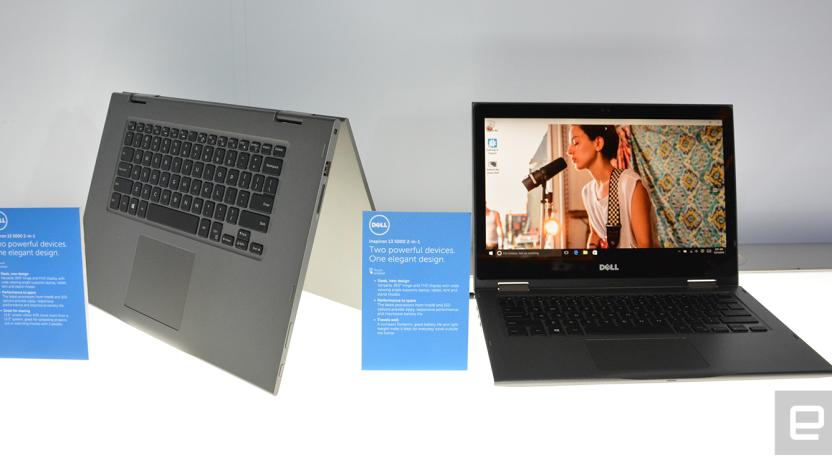
Dell's new 2-in-1 PCs run the gamut in screen size
It's no secret that the PC market has been shrinking due to the onslaught of smartphones and tablets, but if you ask Dell, it's apparently bucking the trend thanks to its 2-in-1 notebooks and gaming laptops. At Computex, Executive Director Monty Wong told us that Dell saw 13 consecutive quarters of increasing PC market share, to the point where it overtook HP as the number one PC brand in the US back in Q1, according to IDC. As such, it's no surprise that the PC giant has been mostly focusing on 2-in-1s at this year's show, with the new lineup running the gamut from the world's first 17-inch 2-in-1 all the way down to a $249 11-inch device. Let's take a closer look.
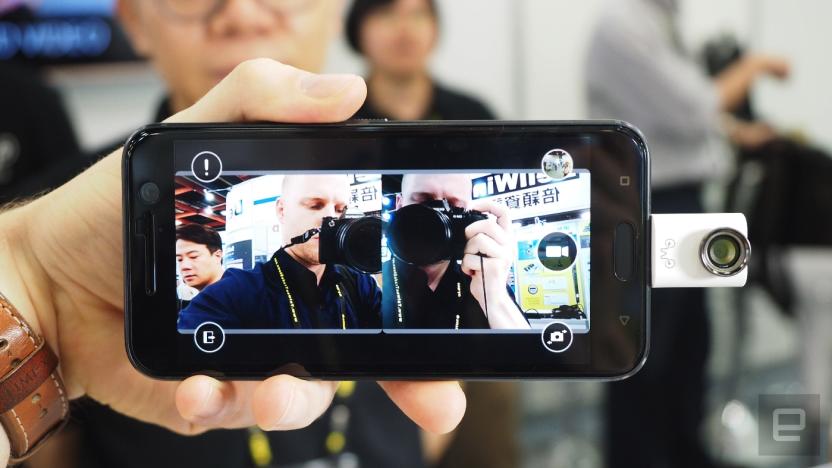
Plug this dongle into your Android phone and it records 3D video
The latest Android phones continue to cram more camera tricks up their unibody sleeves, but what about your current smartphone that's barely a year old? That might be where the Eye-Plug comes in. Hidden inside a humble stand deep within Computex here in Taipei, the USB-C accessory plugs into your (currently Android-only) smartphone, adding another camera sensor to your phone for front- and rear-facing dual camera frivolity. (That's where you need that handy reversible connection.) I tested out a prototype, with full production set to begin later this year. 3D selfie videos could be a horrifying reality.




